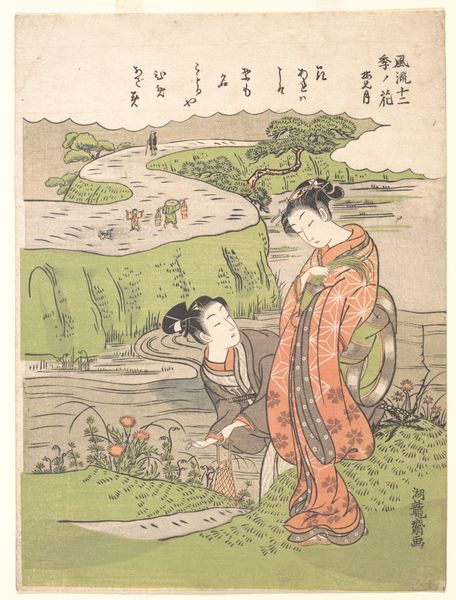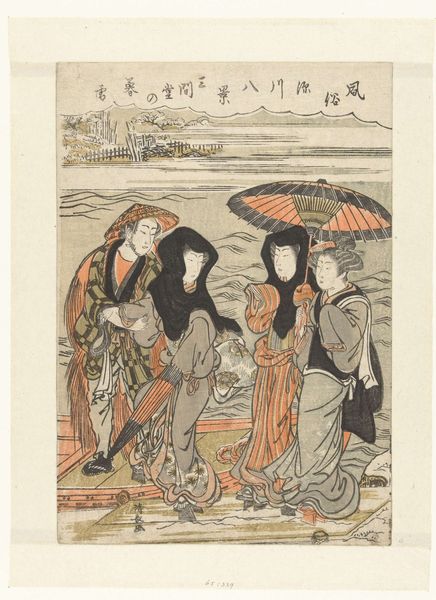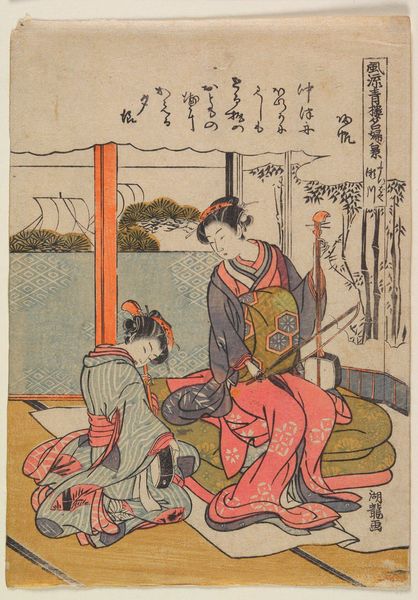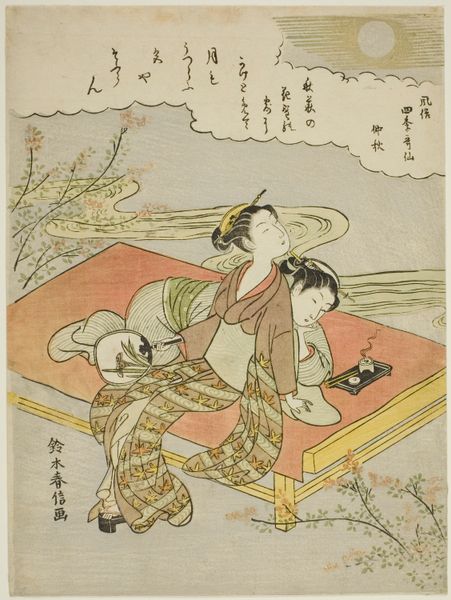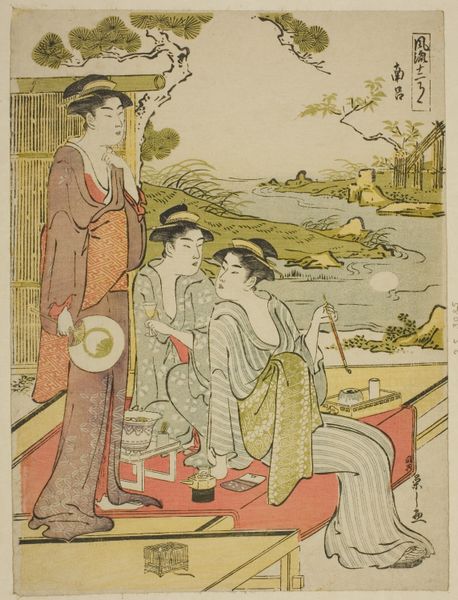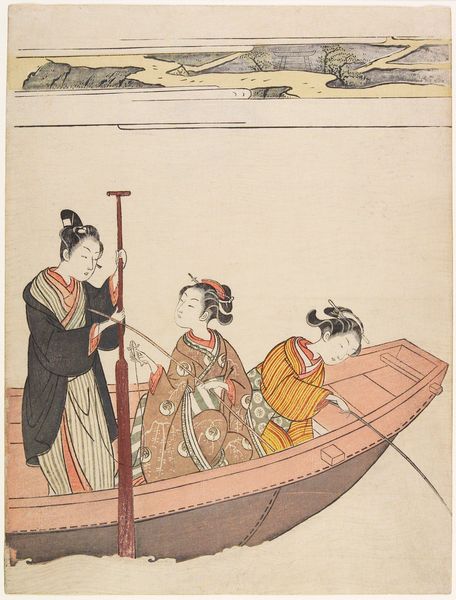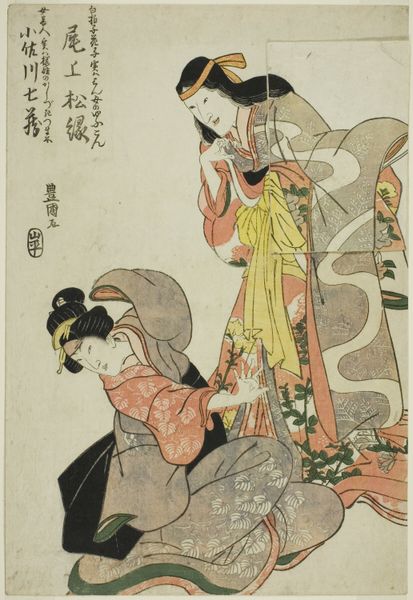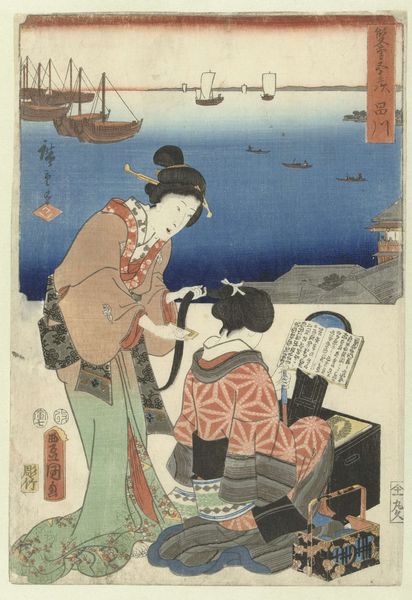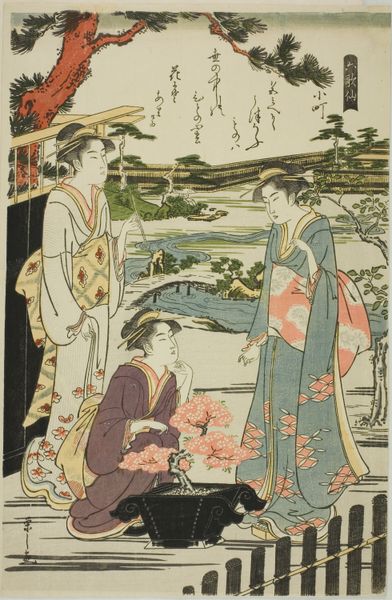
# print
#
asian-art
#
landscape
#
ukiyo-e
#
japanese
#
genre-painting
Dimensions: height 213 mm, width 158 mm
Copyright: Rijks Museum: Open Domain
Curator: Welcome. Before us hangs Torii Kiyonaga’s woodblock print, "Avondregen te Susaki," dating to around 1776-1780. The Rijksmuseum holds this treasure today, offering us a glimpse into the late 18th century. Editor: My first impression is one of quiet elegance. There's a gentle melancholy to the scene, emphasized by the muted colors and the serene expressions of the women. Curator: Absolutely. Kiyonaga's work often presented idealized portrayals of women from the Yoshiwara district, focusing less on overt sensuality and more on grace and refinement. It reflects a shifting dynamic within Edo society. Editor: The landscape, though muted, frames their world. Note how the elevated perspective invites the viewer to observe them within this defined social space. Do you believe the slight sense of detachment affects our interpretation? Curator: I think that's very astute. By framing them against the panorama of Susaki, the artist invites a dialogue between their domestic lives and the world beyond. The Susaki locale itself—known for pleasure houses and the presence of female figures, alludes to Edo Japan's multifaceted character. It blurs the boundary between private life and a very public social sphere. Editor: Exactly. Looking at it from a feminist perspective, what is it saying about gender? Does this artistic expression echo the real status of women in that specific Japanese timeframe? Curator: It's complex. Kiyonaga doesn’t necessarily challenge existing power structures directly. His prints provide valuable documentation of contemporary clothing styles and social customs that allow scholars to dig deeper into those complexities. It prompts examination, which might not automatically reflect the social status quo. Editor: True. By choosing not to over-sexualize them in the way previous ukiyo-e traditions sometimes did, he makes them more tangible, adding an undercurrent of empowerment to them. Curator: That resonates with shifts we were observing in societal roles in other parts of the world. It is crucial not to look at any artwork as isolated to just what we see; socio-political impact, the effect the artwork had on the culture surrounding it and subsequently is always what defines its story, or at least a part of it. Editor: Indeed. “Avondregen te Susaki” functions not just as a visually pleasing image, but as a point of entry into discussions around women's roles, their agency, and their place within a layered society. Curator: I concur. This is one artwork whose whispers keep revealing insights over time. Editor: Precisely, I can see myself thinking about this image and learning from it over the years to come.
Comments
No comments
Be the first to comment and join the conversation on the ultimate creative platform.
